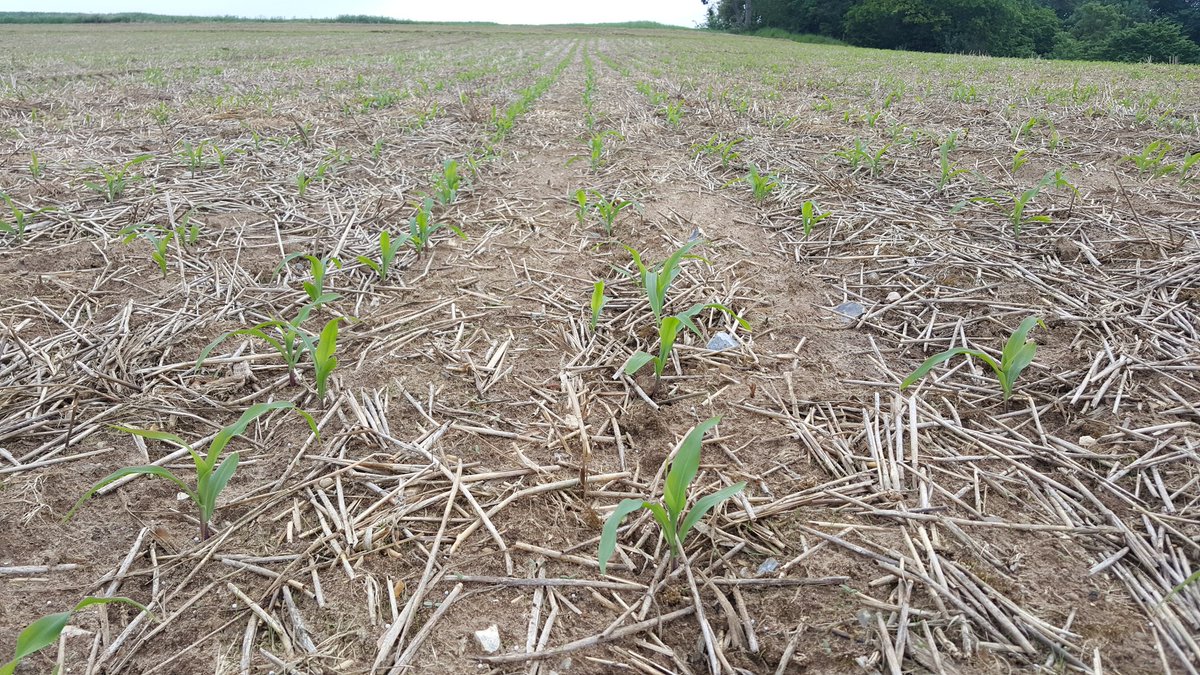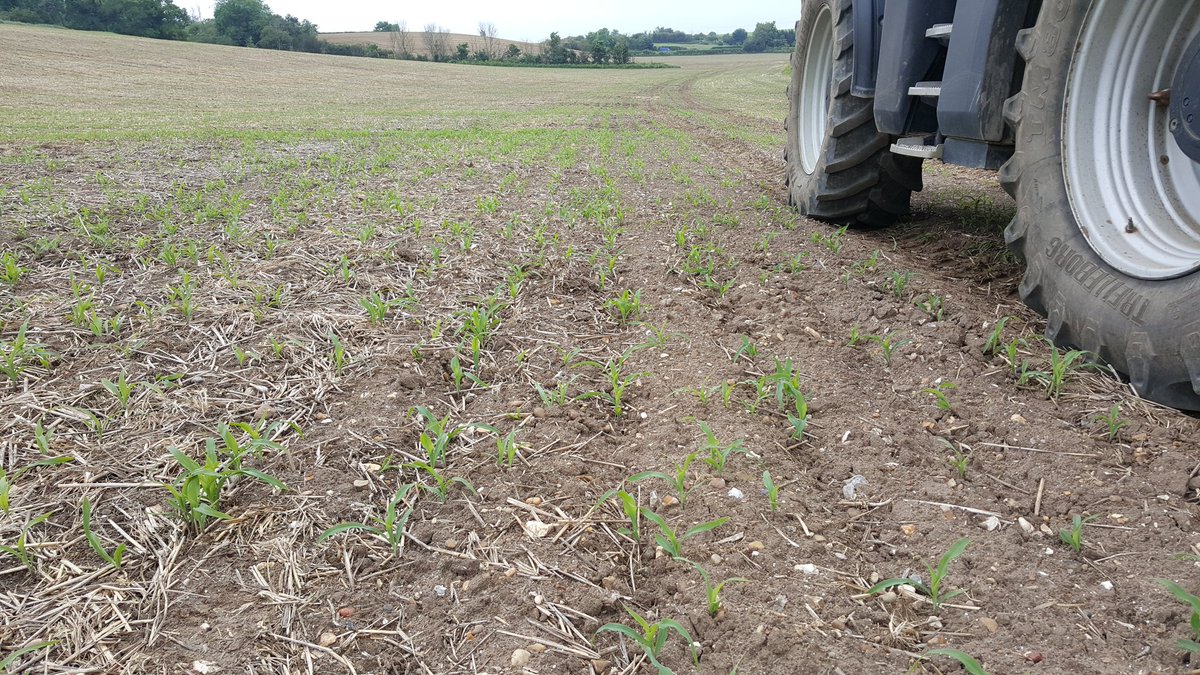Maize into oat stubble, 19 days after drilling. Not sure how confident to feel about it but it is on some difficult land to drill, not because of soil type but because it's so bloody steep. Made the fan work hard. We shall see! Drilled with the mzuri.


An update on this. Fairly pleased overall with the strip tilled maize drilled with the Mzuri, not the easiest fields to drill and the poor bits/drilling cock up are all visible from the roads but only total a couple of acres out of 20 odd. Our ploughed heavier land isn't exactly romping away anyway and has needed some maize boost despite having plenty of seedbed phosphate. The cost saving over our usual establishment (plough, power harrow, drill) is massive and I will do the same again next time.

























